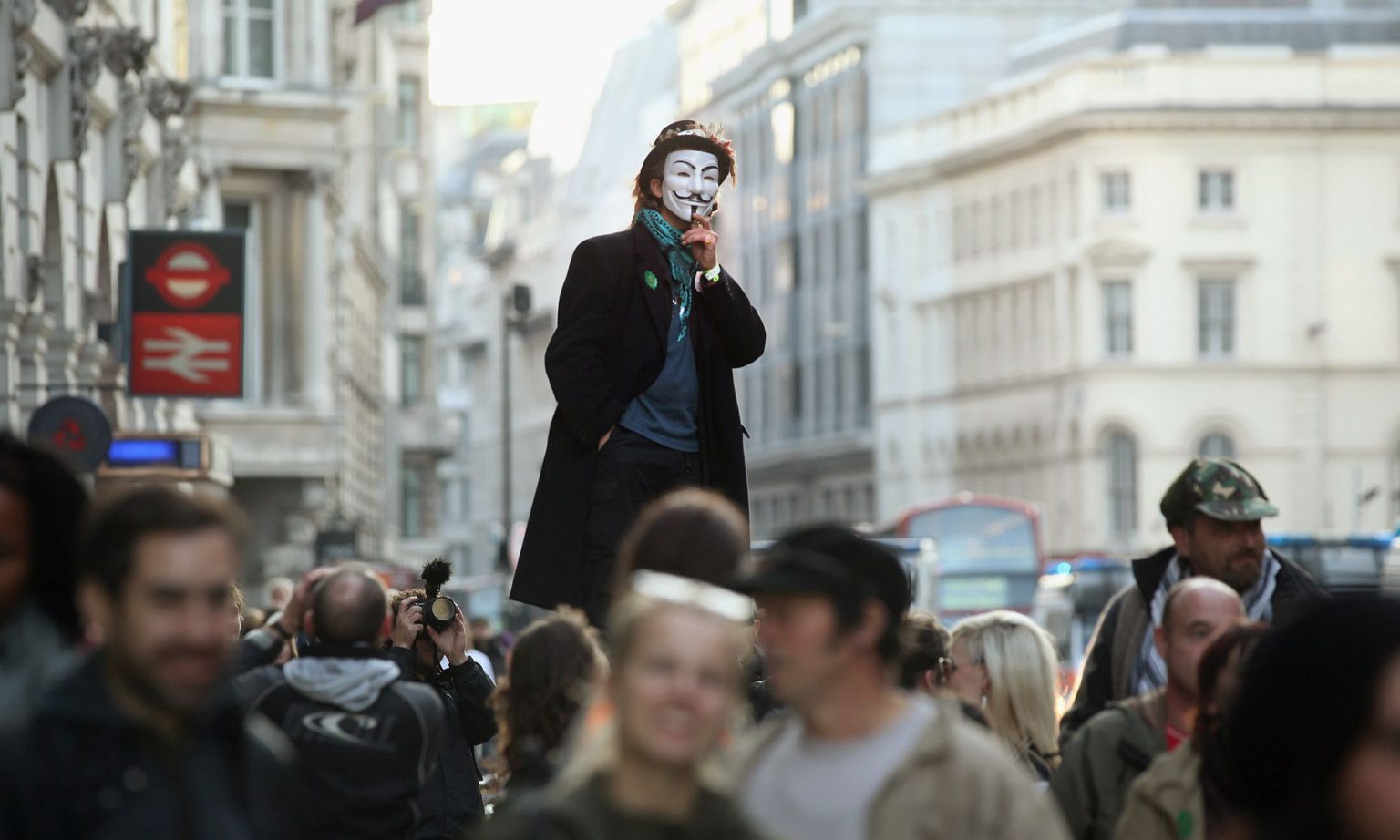
Long-read
The rise of left-wing conspiracy theories
The view of Brexit as a neoliberal conspiracy confirms the paucity of left-wing thought.
Brexit has ruthlessly exposed the poverty of mainstream left-wing thought, which is now mobilised against Brexit itself. Not all of the left is anti-Brexit, of course. But certainly the UK left’s leading proponents are, from the Corbynised Labour Party to the pundits and academics who so ostentatiously style themselves as left-wing, radical and sometimes even Marxist. The poverty of their thought lies principally in their embrace of conspiracism.
This can take the form of overt anti-Semitism, as it has frequently done in the memes and tweets of Labour members and even some MPs, who believe that international affairs are being driven behind the scenes by an all-powerful network of pro-Israel lobby groups. But more often the conspiracism is far easier on the conscience, comforting its adherents that they are really just sticking up for the poor and the downtrodden who are being conned and duped by a cabal of the super-rich, intent on using Brexit, and the populist surge in general, to advance their evil plans.
The characters change depending on the teller. Sometimes the conspirators are ‘disaster capitalists’, sometimes ‘corporations’, sometimes even specific individuals, or entitled ‘moneyed wreckers’, such as one-time UKIP donor Arron Banks, ex-media exec Steve Bannon, or antediluvian Tory Jacob Rees-Mogg, all, implausibly but allegedly, doing the bidding of Russian president Vladimir Putin. And sometimes the motivations of the conspirators change, too – from libertarian, small-state zeal to simple, undiluted avarice.
But the basic conspiracist logic always persists, unaltered and compelling in its simplicity. There is a ‘cadre’ of bad people who are the agency behind the scenes, the power behind the people, the not-so-great men making history. And they are manipulating a mess of resentments in order to realise their vision of an utterly deregulated free market, a neoliberal utopia. Or something. ‘This, after all, was the point of the exercise’, says one pundit about Brexit, as if it was all just one big ruse.
The power of left-wing thought
Such leftish conspiracism has the veneer of radicalism, but none of radicalism’s desire to dig at the roots of society. It lambasts capitalism, often lending it an amplifying prefix, such as ‘disaster’ or ‘hyper’, but it ventures no critique of capitalism. The forces and tendencies at work in the social and political world, like the ideas of democracy and sovereignty that have once again become real material forces, remain out of sight in this new left worldview. Instead, it turns Brexit, and the populist moment in general, into little more than a morality play, attributing the complex movement of history to the actions and motivations of ill-intentioned individuals.
This is not to say that the actions and convictions of such individuals are irrelevant. Rather, it is to say that they are not absolutely determinant. If they were, Change UK, having spent the most of any party on social-media ads during the European elections in May, would be a formidable rather than a spent force. Men and women can try to make history, but they have no control over the conditions in which they do so.
Of course, conspiracy theory is not solely a left-wing problem. It is equally prevalent on the right, and nastily so. What makes the degeneration of mainstream left-wing thought into conspiracy theory so striking is that, in the past, left-wing thought was critical of conspiracism – ‘the socialism of fools’, as August Bebel, the 19th-century German socialist, described the anti-Semitic obsession with Jewish bankers.
Historically, drawing deep on the legacy of the Enlightenment, left-wing and especially Marxist thought was never content to take the world at face value. It sought, through reason and action – or theory and praxis – to understand what causes the world to appear other than it is. It grasped and grappled with the processes by which social reality is continually being reproduced. Karl Marx, taking a critical cue from the French Physiocrats and especially the classical political economy of Smith and Ricardo, set out to do precisely that. He started out in Das Kapital, with the thing as it appears to us – the commodity – and proceeded, over hundreds of pages, to lay bare its social essence (in alienated form), and ultimately ‘the economic law of motion of modern society’ (1). He was concerned not with individuals pulling the strings, be they illuminati or freemasons, but with impersonal forces, with a mode and relations of production. People were ‘bearers’ of economic relations, not the drivers.
The left was traditionally opposed to conspiracy theories – now it is at the forefront of conspiracist thinking
His materialist method, like those who were later to think and act in his spirit, was dialectical. But his metaphors, such as capital’s ‘law of motion’, were often drawn from the physical sciences. It meant that in the hands of some, Marx was presented as a natural scientist, merely studying objective laws of historical development that operate independently of the observing subject. History was seen as automatic and the subject was viewed as passive. As a result, ‘economism’ dominated large sections of the 19th-century left.
The correction came with the Russian Revolution in 1917. There was nothing automatic about the Bolsheviks’ seizure of power. It was a moment in which history was being made, in which a revolutionary subjectivity was consciously mediating objectivity. And through the work of Georg Lukács, Karl Korsch and, to an extent, Antonio Gramsci, it was a moment in which the dialectical understanding of history as a unified if contradictory process was not only restored to the canon of left-wing thought, but also reached a radical pitch. Consciousness – class consciousness – was not the product of economic forces, or a mere reflection of a material position; rather, it was dynamic and active, transforming itself in action, and transforming the object in theory.
Almost inevitably, in re-emphasising the subjective side of the historical dialectic, many left-wing and Marxist thinkers began focusing on the relationship of cultural forms to economic relations. They were interested in how the subjective moment of thought and ideas, and of art and literature, expressed and mediated objective developments; how, for instance, the historical novels of Walter Scott expressed and mediated the objective experience of the progressive bourgeoisie; how Tolstoy’s work engaged with and illuminated populist opposition to Tsarism; and, later, how modernist and avant-garde art reckoned with and framed the experience of modernity.
Cultural politics
The left-wing, Marxist thought of the 1920s and 1930s that flourished in, and also outside, the Soviet Union – so-called Western Marxism – marked an advance on the soon-to-be Stalinist dogma that proscribed all subjectivity. In its emphasis on and exploration of culture, it sought to enrich rather than replace a left-wing tradition, whose theoretical power rested on its penetration into the material, economic depths underlying the forms in which social life appears.
But in the hands of the New Left and the counterculture more broadly, the stick starts to be bent too far the other way. The work of the likes of Lukács and Gramsci is revived during the 1960s, but only one-sidedly. If late 19th-century socialist thought, and 20th-century Stalinism, fetishised the objective laws of economic development at the expense of the subjective moment of the dialectic, then the postwar New Left starts to fetishise the subjective moment at the expense of the economic, objective element. Culture as a sphere almost seems to acquire a quasi-independence during the late 1950s and 1960s. It becomes a site of political struggle and resistance in its own right. ‘The personal is political’, came the rallying cry. ‘Smash monogamy’, went the order. ‘Tune in, turn on, drop out’, drawled the counterculture.
In a sense, the shift away from an economic theory towards a cultural one makes sense. The New Left in the US and Europe emerged apart from, and frequently in opposition to, a workers’ movement that was still too often in thrall to Stalinism. The New Left developed its critique of existing society free of involvement in workers’ actions. As Herbert Marcuse noted in One-Dimensional Man, 1960s radicals accepted ‘the absence of demonstrable agents and agencies of social change’ (2). The New Left’s departure from the old left was a departure from the politics of the working class. Radicals’ natural home now, like Marcuse’s, was the university, not the dockyard. If the New Left had a vanguard, it comprised angry graduates rather than pissed-off proles. Likewise, its objectives were not economic – they were cultural. They amounted to the total rejection and transformation of the values of the affluent society, sustained and legitimised as it was by the postwar boom.
There was much to admire in New Left thought. It remains challenging and intellectually curious. And in its opposition to the values of the postwar West, in seeking to resist anything that smacked of conformity, of ‘one-dimensional thought and behaviour’, as Marcuse had it, it strained to give new shape to individual freedom (3). It went hand-in-hand with a period in which many really did engage in what John Stuart Mill called experiments in living.
The New Left of the 1960s no longer viewed ordinary people as agents of change, but rather as objects shaped by ‘the culture’
But there was a considerable cost to giving up on the social agent of change. It meant moving from a theory that sought to grasp and change social reality from the perspective of its dialectical, alienating production, to an approach that challenged social reality from the perspective of its consumption.
The result is a moment in which subjectivity – culture – is fetishised. Which in turn results in a mode of theorising in which subjectivity is pacified. It becomes something that is shaped by external forces of production, which consumes what it is fed by an alien power. Hence, subjectivity is celebrated at the same as its celebrants claim it is administered and controlled, stupefied by the ‘automobile, hi-fi set, split-level home, kitchen equipment’ (Marcuse); named and ‘interpellated’ by a ruling ideology (Althusser); and captured by the culture industry (Adorno). A left-wing social critique, which might once have dived deep into the contradictory processes by which reality is produced, becomes superficial, concentrating on the way in which we are determined by our consumption – of media, of adverts, of ideas.
And crucially, as cultural critique, it conceives of social relations in interpersonal terms, in terms of manipulation, of conning, of ‘managed consent’. The impersonal forces of the older Marxist critique become personalised. They are transfigured as the forces of manipulators, hidden persuaders – in short, bad guys. They’re the advertisers, the corporations, the organisations.
During the 1970s, this latent conspiracy theory even becomes a paranoid fantasy. One consumed, ironically, by those allegedly manipulated masses themselves, in a cycle of films in which society is depicted as being controlled by corrupt economic and political elites. Think Klute (1971), Executive Action (1973), Chinatown (1974), The Parallax View (1974), All the President’s Men (1976), and Network (1976).
Conspiracism goes global
The theoretical and practical abandonment of the sphere of production in favour of that of consumption – a movement signalled by the shift away from an economic towards a cultural critique – does not necessarily result in leftist conspiracism. Conspiracism becomes more pronounced through the inclusion of other forms of cultural politics, too, from the concern with identity and recognition to the New Labour-ish politics of behaviour.
However, what the cultural turn of the 1960s and 1970s does is lay the ground for a form of leftist conspiracism in which the subject, seen apart from its economic activity, becomes the victim of shadowy forces beyond its control. After the defeats of the organised working-class during the 1980s and the fall of the Soviet Union, the conspiracist moment fully arrives. And it does so most notably in the anti-globalisation movement of the late 1990s and early 2000s, and its Occupy revival in 2011.
Journalist and activist Naomi Klein is a significant figure here. Her No Logo: Taking Aim at the Brand Bullies (1999), an evocative essay on consumer activism, provided the theoretical mood music to an era punctuated by the anti-WTO protests in Seattle in 1999 and the Carnivals Against Capitalism of the early 2000s. In the spirit of earlier New Left theorists, the anti-globalisation movement addressed itself to the seeming colonisation of every aspect of life by the corporations. No cultural nook or cranny was out of their grasp, it suggested. As a treatise, it had the aura of profundity, hinting at some more authentic life beyond the brand. In style, it even had the appearance of an economic critique, couched, as it was, in terms of anti-capitalism. But in substance it was conspiracist, conjuring up a set of corporations, aided and abetted by the World Trade Organisation, as the source of our collective inauthenticity, our unreality, our unfreedom.
In her 2002 collection, Fences and Windows: Dispatches from the Front Line, Klein’s conspiracism starts to come out more explicitly. Globalisation starts to reveal itself as a global conspiracy. Every local problem, she writes, from food security in Europe to the rise of HIV in Africa, is the effect of ‘a global ideology, one enforced by national politicians but conceived of centrally by a handful of corporate interests and international institutions, including the World Trade Organisation, the International Monetary Fund and the World Bank’ (4). This depthless insight forms the basis for the fully fledged capitalism-as-conspiracy schtick of Shock Doctrine: The Rise of Disaster Capitalism (2007), in which she contends that a neoliberal clique, acting out the dreams of Milton Friedman, use disasters and crises in former colonies and elsewhere to leverage loans in return for mass privatisations, tax cuts for the rich and public spending cuts for the rest.
It sounds almost economic. Almost like an objective analysis. It talks of economic policy, of high finance, of profit. But it has no depth, no penetration, no genuine theoretical movement from appearance to essence. Instead, it sticks at the level of how things appear, and reduces relations of production and so on to interpersonal relations, to relations between individuals. Between ‘brand bullies’ and dupes, between a set of baddies and those to whom they’re doing bad things. Capitalism is not a mode of production anymore – it is a plot, a get-rich-quick scheme.
Klein was only the most high-profile of the new left-wing conspiracists. There were others, too, such as Kalle Lasn, the founder and editor of Adbusters, who set out, like Klein, to challenge through subversion the branded colonisation of our lives, before his conspiracism, like Klein’s, broke out into the open in the mid-2000s. As Brendan O’Neill reminds us, this culminated in Lasn publishing his infamous 2004 list of neoconservatives intent on advancing the US as a ‘hyper-power’ around the world, complete with an asterisk next to their names if they were Jewish.
In 2004, Adbusters magazine published a list of neoconservatives and put an asterisk next to their name if they were Jewish
And it was Lasn who, on 13 July 2011, released the call to action, #OccupyWallStreet. ‘Are you ready for a Tahrir moment?’, it read, referencing Egyptian protesters’ stand against President Mubarak. ‘On 17 September, flood into lower Manhattan, set up tents, kitchens, peaceful barricades and occupy Wall Street.’ (5)
Lasn may have invoked the Arab Spring, but that was misdirection. Occupy was a Western phenomenon, an opportunistic revival of the anti-globalisation movement. It took the post-2008 economic crisis and interpreted it through the conspiracist lens ground out by the likes of Klein. In doing so, it added a new manichaean gloss to the Kleinian conspiratorial landscape. The bad guys of anti-globalisation – the corporates, the WTO, the disaster capitalists – were now grouped under the banner of the ‘1%’, and they were to be held directly responsible for the travails of the ‘99%’. The 1% were driven by ‘greed’ and dedicated to the ‘corporate takeover of the political system’, opined Occupier Sarah Ruth van Gelder (6).
Klein herself even delivered a speech to the protesters, embracing Occupy’s fractional lexicon. ‘If there is one thing I know, it is that the 1% loves a crisis’, she told activists. ‘When people are panicked and desperate and no one seems to know what to do, that is the ideal time to push through their wish list of pro-corporate policies: privatising education and social security, slashing public services, getting rid of the last constraints on corporate power. Amidst the economic crisis, this is happening the world over.’ (7)
Occupy is a comforting and righteous tale. A tale of an evil 1% sowing discord, and fomenting chaos, which it then uses to pursue its dream of a neoliberal world order. It is not insightful, let alone true. But, as its adoption by those self-styled left-wingers opposed to Brexit shows, it is all-purpose. The ‘disaster’ to be exploited today, however, is not a financial crisis in South America, or civil breakdown in North Africa. It is Brexit itself.
Brexit is not a conspiracy
In the Brexit version, there are moderations to the basic thrust of the Kleinian/Occupy narrative, with Russian president Vladimir Putin often being introduced as the grand power behind the populist surge. ‘The Kremlin is no longer the heart of the Soviet Union’, writes one conspiracy theorist: ‘It’s at the centre of a network of billionaire power built by Russia’s disaster capitalist-in-chief, Vladimir Putin, sometimes said to be the richest man in the world. It’s no surprise that this vortex of neoliberal plunder would want to use [the Brexit] crisis to influence the management of their preferred money laundry [the UK].’
Some of the conspiracy theorising around Brexit is impressively granular, identifying meetings between salient individuals, shared addresses of think tanks, and, of course, the bias of the ‘corporate-owned’ media. ‘They’re all in on it.’
But the differences in detail shouldn’t obscure the essential conspiracism of the anti-Brexit ‘theory’. It is not penetrating or theoretical. It is superficial, shallow, undialectical. It treats Brexit as something that was done, in bad faith, to the British electorate by ‘a cadre of moneyed wreckers’, ‘the world’s pollutocrats’; ‘the disaster capitalist-in-chief, Vladimir Putin’. Largely working-class Brexit voters are presented as the 1%’s ‘cannon fodder’, seduced by the illusion of taking back control, much as the New Left’s stupefied masses were by consumerism and the culture industry.
It is a conspiracy that salves the guilt of a left that, historically, would have supported Brexit rather than betray it. It allows them to imagine they are still where they feel they belong, on the right side of history, defending the 99% against the evil plans of the 1%. But it is an illusion, and a fateful one at that. For it obscures what Brexit could be said to represent: the reassertion of a historical subjectivity lost in the New Left’s cultural turn; a desire to exercise power rather than just being shaped by it. There is a dialectical opportunity there. But too many on the left can no longer see it.
Tim Black is a spiked columnist.
Picture by:Getty Images.
(1) Capital Volume 1: A Critical Analysis of Capitalist Production, by Karl Marx, (ed) Friedrich Engels, Lawrence and Wishart, 2003, p20
(2) One-Dimensional Man, by Herbert Marcuse, Routledge, New York 1964, pxliii
(3) One-Dimensional Man, by Herbert Marcuse, Routledge, New York 1964, p14
(4) Fences and Windows: Dispatches from the front Line, by Naomi Klein, Vintage, London, pXV
(5) Occupying Wall Street: The Inside Story of an Action that Changed America, by writers for the 99 per cent, OR Books, 2012 p1
(6) Occupying Wall Street: The Inside Story of an Action that Changed America, by writers for the 99 per cent, OR Books, p13
(7) Occupying Wall Street: The Inside Story of an Action that Changed America, by writers for the 99 per cent, OR Books, p45
To enquire about republishing spiked’s content, a right to reply or to request a correction, please contact the managing editor, Viv Regan.









Comments
Want to join the conversation?
Only spiked supporters and patrons, who donate regularly to us, can comment on our articles.